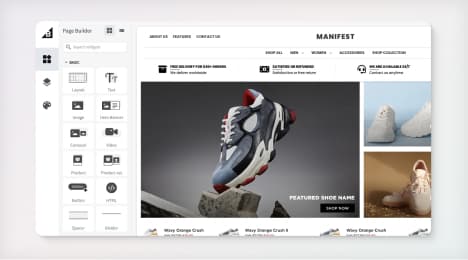
Watch Our Product Tour
See how BigCommerce helps you build and manage your online store with ease.
- Ecommerce Insights

6 Key Steps to Launch Your Online Store
Explore our Launch Foundations series to get your BigCommerce store up and running quickly.
BigCommerce helps growing businesses, enterprise brands, and everything in-between sell more online.
What is Brand Equity?
As a company, your brand is one of your most precious resources. A strong brand makes other parts of business much more straightforward. The value of a brand often gets described as brand equity. Fortunately, all this is far easier to understand than it first appears.
If you want to get your head around brand equity, all you need do is to read on. We’re going to give you a simple definition of the term. Then, we’ll explain the importance of brand equity by discussing how it develops over time.
Defined: Brand Equity
Brand equity is the name given to the value of a company’s brand. It’s a measure of overall consumer perceptions of any brand. Those perceptions get shaped by the customer experience that a brand offers.
If consumers get treated well, they’ll develop favorable perceptions of a company. Thus, positive brand equity gets generated. Poor customer experiences, meanwhile, create unfavorable opinions of a business. That’s when negative brand equity results. And once it has, it can be tough to turn around.
The Importance of Brand Equity
Positive brand equity is valuable for a company. When they have a more substantial reputation with consumers, businesses enjoy many benefits. Before we detail those, let’s explain how brand equity develops. The best way to do this is to follow a customer’s journey with a brand.
1. Awareness.
Awareness is the first stage of the customer journey. It’s when prospects first learn about a brand. This usually occurs via advertising or another form of marketing. Recently, for instance, many people will have learned about alternatives to Skype. That’s as brands in that niche have advertised heavily to capitalize on the uptick in remote working.
2. Recognition.
That customers know a brand exists doesn’t help the company all that much. They need to keep engaging with their target audience to build recognition. At this stage of the journey, consumers get familiar with a brand. They start to recognize products or slogans when they see them.
3. Trial.
The trial stage is where consumers directly interact with the brand for the first time. Having got familiar with a brand’s products, they now try them out. For instance, a small business might try out one of the unified communications platforms they’re now aware of.
4. Preference.
It’s at this stage that positive brand equity starts to appear. Thanks to positive experiences with a firm and its products, customers start to favor them over others. Given a choice, they’ll often opt to buy from that brand over others.
5. Loyalty.
Continued strong experiences move preference to loyalty. Loyal customers always stick with one brand. More than that, they also recommend that company to others. For example, let’s think about that small business we mentioned earlier once again. They might know another firm looking to improve collaboration in the workplace. As a loyal advocate of the brand, they’ll suggest the platform they use to that other business.
Loyal customers who promote your brand are one of the main benefits of positive brand equity. As well as providing free marketing, such customers are also more likely to buy or use multiple products or services from a single brand.
Examples of Brand Equity
You should, by now, have a fair idea of what brand equity’s all about. What, though, does positive or negative brand equity look like in practice? Let’s dive into a couple of real-world examples.
1. Positive brand equity.
Starbucks is a hugely successful brand in the food and beverage niche. The company is also a prime example of positive brand equity. That's thanks to the reputation it has built for quality and social responsibility. That’s a heady mix and helps to explain how Starbucks netted revenue of $26.5 billion in 2019.
2. Negative brand equity.
It doesn’t take much for negative brand equity to get generated. Often, one high-profile mistake or unfavorable event can do the job. Take United Airlines, for example. Back in 2017, they got lots of negative publicity for forcibly removing a passenger from an overbooked plane. Their brand equity took a pounding, and, as a result, so did their share price.
Conclusion
Brand equity is vital to any modern business. Build a positive perception of your company among consumers, and it’s far easier to be successful. Customers will keep coming back for more and recommend you far and wide. Develop negative brand equity, and it’s tough to recover. Companies with an unfavorable rep have to work twice as hard to win customers round.
BigCommerce helps growing businesses, enterprise brands, and everything in-between sell more online.
Start growing your ecommerce business even faster.
High-volume or established business? Request a demo